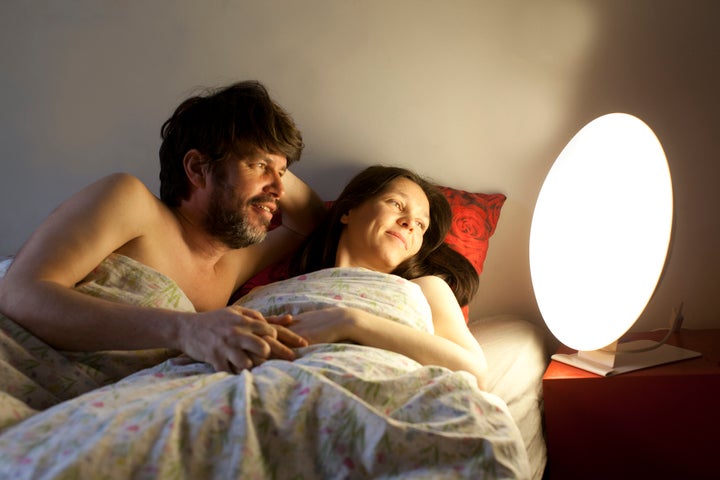Men who have low sex drives may be helped by bright light, a study has found.
Regular exposure to a ‘light box’, similar to those used to combat Seasonal Affective Disorder (SAD), increased testosterone levels and reported levels of sexual satisfaction.
Light boxes can come in many forms including desk lamps, wall-mounted fixtures and dawn-simulating alarm clocks, and are often used in the darker, winter months.
Experts believe their new finding has the potential to help one quarter of men aged 40 and over, who experience low sexual desire.

Previous research has found that sexual interest varies according to the seasons, which prompted researchers from the University of Siena, Italy, to investigate whether levels of ambient light could boost sexual desire.
They recruited 38 men who had been diagnosed with hypoactive sexual desire disorder or sexual arousal disorder – both of which are characterised by a lack of interest in sex - and tested their sexual satisfaction and testosterone levels.
The researchers then divided the men into two groups. One group received regular treatment with a specially adapted light box, while the control group was treated with a light box that gave out significantly less light.
Both groups were treated early in the morning for 30 minutes per day.
After two weeks, researchers retested sexual satisfaction and testosterone levels.
“We found fairly significant differences between those who received the active light treatment and the controls,” said lead researcher Professor Andrea Fagiolini.
“Before treatment, both groups averaged a sexual satisfaction score of around two out of 10, but after treatment the group exposed to the bright light was scoring sexual satisfaction scores of around 6.3 – a more than threefold increase on the scale we used.
“In contrast, the control group only showed an average score of around 2.7 after treatment.”
SEE ALSO:
13 Top Tips For Mind-Blowing Sex, Courtesy Of The Internet
Oral Dams: We Asked Experts The Questions You’re Too Afraid To Ask
Testosterone levels also increased in men who had been given active light treatment, but not in the control group.
“The increased levels of testosterone explain the greater reported sexual satisfaction,” explained Professor Fagiolini.
“In the Northern hemisphere, the body’s testosterone production naturally declines from November through April, and then rises steadily through the spring and summer with a peak in October.
“You see the effect of this in reproductive rates, with the month of June showing the highest rate of conception. The use of the light box really mimics what nature does.”
They believe the light box works by inhibiting the pineal gland in the centre of the brain, which allows for the production of more testosterone.
Professor Fagiolini added that they’re not yet at the stage where they can recommend light boxes as a clinical treatment for sex disorders.
“Even at that stage, there will be a few patients – for example those with an eye condition or anyone taking medicines which affect light sensitivity (some antidepressants, and some antibiotics, for example) – who would need to take special care,” she said.
“However if this treatment can be shown to work in a larger study, then light therapy may offer a way forward.”
Professor Eduard Vieta, chair of the Department of Psychiatry and Psychology at the University of Barcelona Hospital Clinic, commented on the study: “Light therapy has been used successfully in the past to treat some forms of depression and this study suggests now that it may also work to treat low sexual desire in men.
“The mechanism of action appears to be related to the increase of testosterone levels.
“Before this kind of treatment, which is likely to be better tolerated than pharmacological therapy, gets ready for its routine use, there are many steps to be implemented, including replication of the results in a larger, independent study, and verifying whether the results are long-lasting and not just short-term.”